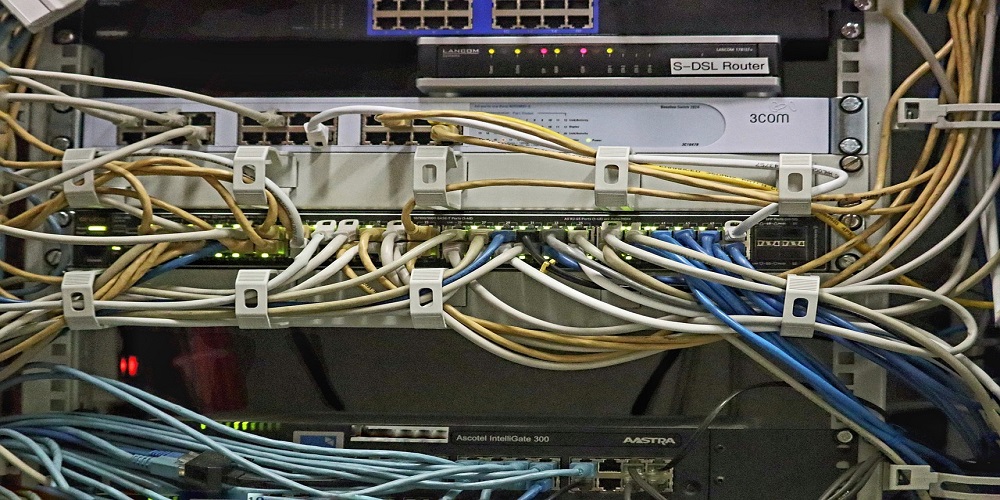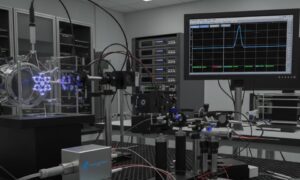Self-healing technologies are emerging as a game-changer in industrial operations. Imagine machinery that can detect issues before they escalate, systems that repair themselves autonomously, and processes that seamlessly adapt to changing conditions—all while significantly reducing costs and downtime. As industries worldwide grapple with the complexities of modern production demands, these cutting-edge solutions offer not just hope but tangible economic advantages. In this blog post, we’ll delve into how self-healing technologies are reshaping the future of industrial operations—transforming challenges into opportunities and setting new benchmarks for profitability and sustainability. Buckle up as we explore the profound economic impact of these revolutionary advancements!
Self-healing technologies and their potential impact on industrial operations
Imagine a world where machines can repair themselves, minimizing downtime and maximizing productivity. This isn’t just a scene from a sci-fi movie; it’s the reality of self-healing technologies poised to revolutionize industrial operations. As industries face increasing pressure to enhance efficiency while cutting costs, these innovative solutions are emerging as game-changers in maintenance practices. The question is no longer whether we should adopt these advanced systems but rather how quickly they can be integrated into our current frameworks. Buckle up—self-healing machines are not only reshaping the future of industrial maintenance but also redefining what operational excellence looks like in today’s fast-paced environment.
Overview of traditional maintenance methods and their limitations
Traditional maintenance methods have long been the backbone of industrial operations. These often include routine inspections, scheduled downtime, and reactive repairs. While these strategies can sustain machinery, they come with notable limitations.
Scheduled maintenance may lead to unnecessary downtime. Machines are taken offline for checks even when they’re functioning well. This approach disrupts productivity and can be costly.
Reactive maintenance, on the other hand, waits for equipment failures before responding. Though it saves time initially, this method usually results in higher repair costs and extended periods of inefficiency.
Additionally, human error plays a significant role in traditional approaches. Mistakes during inspections or repairs can exacerbate problems rather than resolve them. As industries evolve toward more efficient solutions, it’s becoming clear that relying solely on established practices is no longer enough to keep pace with growing demands.
How self-healing technologies can improve efficiency and reduce costs in industrial operations
Self-healing technologies are revolutionizing how industries operate. They allow machines to detect and repair faults autonomously, minimizing downtime. This capability transforms maintenance strategies from reactive to proactive.
With real-time monitoring systems, these technologies identify issues before they escalate into costly breakdowns. By addressing problems early, companies can extend the lifespan of their equipment significantly.
Moreover, self-healing machines optimize resource use. They adjust operations based on performance data, which leads to smarter energy consumption and reduced waste.
This shift not only enhances productivity but also drives substantial cost savings over time. Organizations can reallocate funds previously spent on frequent repairs toward innovation and growth initiatives.
By integrating self-healing capabilities into their operations, businesses position themselves for a more efficient future while maintaining competitive advantages in rapidly evolving markets.
Case studies of companies implementing self-healing technologies and their results
Siemens is a prime example of a company embracing self-healing technologies. By integrating smart sensors into their manufacturing processes, they reduced downtime by 30%. These sensors identify issues before they escalate, allowing for real-time adjustments.
Another notable case is General Electric (GE). Their use of predictive maintenance algorithms has led to significant improvements in operational efficiency. GE reported saving millions annually through early fault detection and automated repairs.
In the automotive sector, Tesla harnesses self-healing materials in its vehicles. This innovation not only enhances vehicle lifespan but also minimizes repair costs due to minor damages.
These examples showcase how industries leverage self-healing technologies. Companies are not just adopting new tools; they’re transforming their entire approach to operations and maintenance.
Discussion on potential concerns and challenges with adopting self-healing technologies in industrial settings
Adopting self-healing technologies in industrial settings isn’t without its hurdles. The initial investment can be daunting for many companies. Upgrading existing systems to integrate these advanced solutions might strain budgets, especially for small manufacturers.
There’s also a learning curve involved. Employees may need extensive training to effectively operate and maintain new self-healing machines. Resistance to change is common; some workers might feel threatened by automation.
Furthermore, there are concerns about reliability and trustworthiness. Industries often depend on proven technology, making the shift towards something perceived as experimental challenging.
Data security is another critical issue. Self-healing machines generate vast amounts of data that could become vulnerable if not adequately protected from cyber threats.
Lastly, regulatory compliance can complicate implementation. Meeting safety and environmental standards while integrating cutting-edge technology requires careful planning and foresight.
The economic benefits of implementing self-healing technologies, including long-term cost savings
Implementing self-healing technologies can significantly transform the economic landscape of industrial operations. These innovations not only streamline maintenance processes but also minimize downtime.
With traditional methods, unexpected breakdowns lead to costly repairs and wasted labor hours. Self-healing machines proactively address issues before they escalate, ensuring continuous operation.
Long-term cost savings become evident through reduced reliance on manual inspections and repairs. Businesses can allocate resources more efficiently, optimizing their workforce for higher-value tasks rather than routine maintenance.
Moreover, enhanced equipment longevity translates into lower capital expenditures over time. Investing in self-healing systems means fewer replacements and upgrades are needed in the future.
As industries shift towards automation and smart technologies, embracing these advancements will likely yield a healthier bottom line while fostering innovation within operational strategies. In an ever-competitive market, this proactive approach could be crucial for sustained growth.
Predictions for the future of industrial maintenance with the integration of self-healing technologies
The future of industrial maintenance is set to be revolutionized by self-healing technologies. As these innovations mature, we can expect a shift towards more autonomous systems. Machines will increasingly monitor their own health and performance.
Predictive analytics will play a key role here. By analyzing real-time data, machines can anticipate failures before they occur. This proactive approach minimizes downtime and maximizes productivity.
Collaboration between humans and machines will become seamless. Operators will have access to intuitive interfaces that provide insights into machine conditions, helping them make informed decisions quickly.
Moreover, industries may see a decrease in the need for extensive manual interventions. Self-repairing capabilities could lead to significant resource savings over time.
As companies embrace these advancements, training programs will evolve too. Workers must adapt to manage this new landscape where technology takes on traditional roles in maintenance processes.
The importance of staying updated with the latest technological advancements in order to remain competitive in the industry.
Staying abreast of technological advancements is crucial for any industry aiming to thrive in a competitive landscape. The rise of self-healing machines offers an exciting glimpse into the future of industrial maintenance, promising not only increased efficiency but significant cost savings as well.
As industries adopt these innovative technologies, they can reduce downtime and extend the lifespan of machinery. This shift will likely redefine operational standards across sectors. Adopting self-healing technologies is no longer just a trend; it’s becoming essential for staying relevant.
By embracing such innovations, companies position themselves at the forefront of their fields. They enhance productivity while fostering sustainability—an increasingly vital aspect in today’s market.
Conclusion
In conclusion, it is clear that self-healing technologies have a significant economic impact on industrial operations. Through reducing downtime, increasing productivity, and improving maintenance costs, these innovative technologies are revolutionizing the industry and providing long-term benefits for businesses. As technology continues to advance and self-healing systems become more sophisticated, we can expect to see even greater economic benefits in the future. It is crucial for industries to embrace these advancements and stay ahead of the curve in order to remain competitive in today’s fast-paced market. Self-healing technologies are truly shaping the way we operate and allowing for more efficient and cost-effective processes.



































